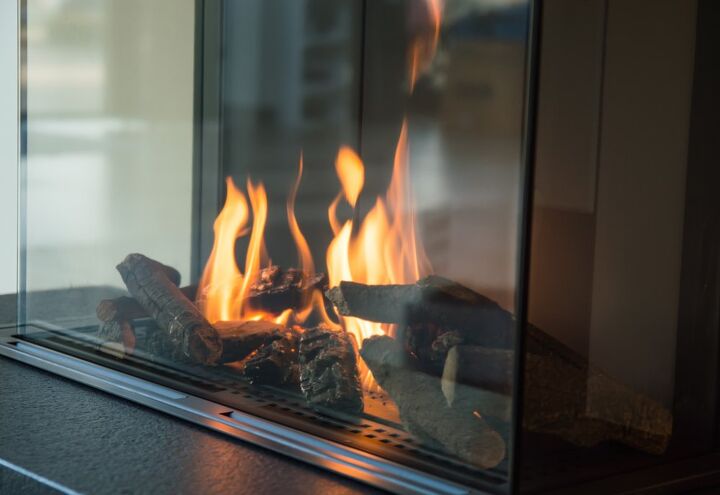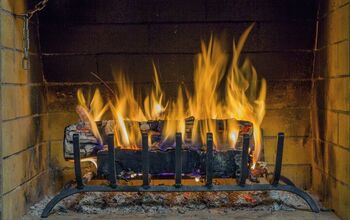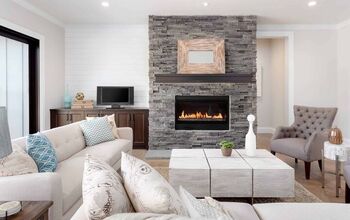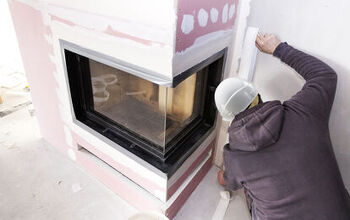How Much Propane Does A Fireplace Use? (Find Out Now!)

When it comes to powering your appliances and heating your home in the winter, propane is one of the most efficient and affordable fuel sources available. So, if you’ve ever considered converting your wood-burning fireplace into a clean-burning, safe, and efficient propane fireplace, you’re not alone.
There’s no greater time than the present to do so, especially with the coldest months of the year rapidly approaching. Not to mention, you’ll certainly want to have your new fireplace ready for the holiday season. However, one question that often comes up when considering this conversion is: how much propane does a fireplace use?
Generally speaking, a propane fireplace uses approximately one gallon of propane for every 100,000 BTU. So, if you have a propane fireplace that is rated 50,000 BTU, you’ll use about a gallon of propane for every two hours that it’s functioning.
With this in mind, it’s easy to see how much additional work and expense it is to have a wood-burning fireplace. Continue reading to learn more about the advantages of propane fireplaces, how much fuel they use, and more.
Why Convert Wood Burning Fireplace to Propane?
Modern propane hearths are available as built-in fireplaces, freestanding stoves, and sealed fireplace inserts that can be fitted right into your existing mantle. These fireplaces offer all the comfort and warmth of a wood-burning fireplace, without the many disadvantages that come along with them.
Whether or not you have a fireplace in your home already, you’ll enjoy the following benefits of having a propane fireplace installed in your home:
- Versatility: Not only are propane fireplaces visually appealing, they also serve as an excellent heat source in a power outage. These fireplaces are so powerful, in fact, that you’ll actually be able to turn your thermostat down a couple degrees when you have the fireplace on.
- Efficiency: A propane fireplace is approximately 80% efficient, which is between four and five times more efficient than a wood-burning fireplace. Generally speaking, they can also burn 40 times as long as wood-burning fireplaces and generate five to six times the heating capacity.
- Low Maintenance: Unlike wood-burning fireplaces, propane fireplaces do not necessitate persistent attention. You don’t have to do anything to start the fire, adjust the placement of the logs, or tend to the fire so that it keeps burning. A propane fireplace is easy to light in a matter of minutes. Plus, there is no cleanup involved afterward.
- Convenience: With a propane fireplace, you can enjoy a warm, beautiful fire any time you want. Most modern propane fireplaces are also outfitted with thermostats, which allow you to control the heat output and intensity of the flame from the comfort of your couch.
- Low Cost: The upfront cost of installing a propane fireplace ranges from around $900 to $3,000, depending on the model you purchase. Then, once installed, the cost of operating a propane fireplace is considerably affordable. Whereas, with a conventional wood-burning fireplace, you must factor in the cost of wood, chimney liner replacements, fire code-required cleanings, and the drop in efficiency compared to propane fireplaces. With all these factors in mind, you can expect to save a lot of money when you use a propane fireplace to warm your home.
- Health Impact: While burning wood smells good, it’s not good for your health. These fireplaces emit soot, smoke, and ash into the air as they burn. Not only does this dirty up the space and require more frequent cleaning, the biggest health threat is from fine particles in the smoke. These microscopic materials can create respiratory problems, potentially causing a heart attack, and more. Since propane burns clean, you won’t have to worry about any of these health risks.
- Environmental Friendliness: In addition to being better for your health, propane fireplaces are also better for the environment. In fact, wood-burning fireplaces release as much as 4,000% more emissions than propane fireplaces.
How Much Propane Does a Fireplace Use?
Now that you understand the advantages of converting your existing wood-burning fireplace into a propane fireplace, it is reasonable to wonder how much propane you’re going to need. In order to determine how much propane a fireplace uses, you must know the size of your own fireplace. The larger the fireplace, the higher the heat output, but also the more fuel required to operate it properly.
All modern propane fireplaces are rated by the manufacturer in terms of British Thermal Units (BTUs). A fireplace’s BTU rating indicates how much heat a fireplace can produce anytime it’s turned on with the maximum amount of propane. If you’re not sure what your fireplace’s BTU rating is, speak with your local propane technician.
While the specific burn rate varies from fireplace to fireplace, as a general rule of thumb, a propane fireplace uses about one gallon of propane per hour for every 91,500 BTU. So, this means that if you have a 100,000 BTU fireplace, you will burn through one gallon of propane each hour that it is running.
Consider the Weather
The weather outside can impact how much fuel you burn when using your propane fireplace. When temperatures decline outside and you use your propane fireplace to actively warm the inside of your home, you will utilize more fuel. Though, when the temperatures are warmer and you’re just using your fireplace as a supplemental heat source, you’ll use less fuel.
Consider the conditions that you are operating your propane fireplace in and keep an eye on your fuel levels with each use. By monitoring over time, you’ll notice trends and find ways to reduce your propane use where needed.
Monitor the Setting
As previously mentioned, one of the major advantages to swapping out a wood-burning fireplace with a propane one is the ability to control output. While you can control the size of a wood-burning fire, it’s challenging to maintain a specific temperature. However, with a propane fireplace, you can alter the amount of heat it produces with just a simple switch.
If you still want to enjoy your fireplace’s flames but don’t want to put out too much heat, you can limit the gas supply. The advantage to this setting is the fact that you’ll use less fuel during the burn time.
On the other hand, if you are relying on your propane fireplace to warm your home, turning up the gas supply to the highest setting will allow the system to operate at its maximum BTU rating. With that said, you will use more propane and experience a faster burn-rate.
How to Maximize Efficiency of Your Propane Fireplace
One of the best ways to ensure that your fireplace remains as efficient as possible is to have the system professionally maintained at least once a year. Find an experienced, local propane repair technician to inspect your fireplace for any signs of wear and tear toward the end of every summer. They should also inspect the propane tank for damage to ensure that your home continues receiving the fuel it needs.
During this professional inspection, you will learn where or not your fireplace is free of clogs and debris that can prevent it from running at maximum efficiency. If the technician does find any signs of damage, they will be able to repair it accordingly to have your system back up and running and producing the desired amount of heat.
Related Questions
How much do propane fireplaces cost to run?
Propane fireplaces are notoriously inexpensive to operate, mostly due to the low cost of propane. On average, propane costs $1.09 per 100,000 BTU worth of heat. Though the price of propane varies based on the state and month purchased.How much a propane fireplace costs to run will depend on how long you run it a day and the size of the fireplace. For example, if you run a standard (20,000 BTU) propane fireplace for 8 hours a day, you will spend about $2.32 per day on fuel.
Can you run a gas fireplace all day?
Vent-free gas fireplaces, which do not exhaust fumes outside of the home, should not be left on for more than two to three hours at a time. The space should also have sufficient ventilation. Whereas, most direct vent gas fireplaces can be operated continuously since they have a sealed glass front and an exhaust vent that removes fumes out an exterior wall of your home.
How much energy do gas fireplaces waste?
Fireplaces that burn natural gas or propane are more energy efficient than their wood-burning counterparts. With wood-burning fireplaces, the majority of the heat and energy created is removed out of the chimney rather than being distributed throughout the space.Whereas, gas fireplaces deliver the heat they produce into the home with far more efficiency. Only 20 percent of the energy created by a gas fireplace is wasted, compared to a whopping 60 percent with wood-burning fireplaces.
Do propane fireplaces produce carbon monoxide?
Propane and other forms of gas fireplaces all emit carbon monoxide as they burn. For this reason, you should have your propane fireplace inspected once a year by a professional to ensure proper ventilation and combustion.

Jessica considers herself a home improvement and design enthusiast. She grew up surrounded by constant home improvement projects and owes most of what she knows to helping her dad renovate her childhood home. Being a Los Angeles resident, Jessica spends a lot of her time looking for her next DIY project and sharing her love for home design.
More by Jessica Stone



























